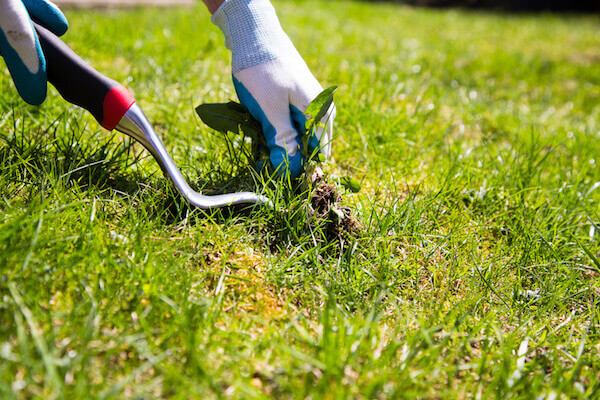
Controlling Weeds on Your Florida Lawn
A Florida Lawn is certainly something to boast about. And something so great certainly doesn’t take care of itself! It’s very important to manage any weeds that have appeared on your lawn, before they get out of hand and take over. Weeds are considered unwanted plants, or plants that are growing out of place. In order to plan the best weed control strategy, you should be able to identify what kind of weeds you are looking at, why they have appeared on your lawn, and how to properly remove them to prevent them from returning. Carefully planning and coordinating a program for weed control will get you on the path to success and a gorgeous lawn. There are several methods that can help get rid of them, and we’re here to provide them. Check out this rundown of the different ways to kick those weeds to the curb:
By Hand
Mowing the lawn: With proper mowing height and frequency, annual weeds can be easily taken care of. To reduce weed seed reserves, it’s important to mow prior to weed seed head formation. There are some types of weeds that are capable of readily establishing below the desired mow height, which can cause further issues. Generally speaking, you should remove only a third of the turf’s leaf blade at a time while you are mowing. As a result, you create a turf canopy capable of growing rapidly while shading weeds and suppressing their growth.
Hand pulling or rogueing: This is the best technique for managing a few weeds at a time. Other alternative should be considered, especially if the weeds have become a major problem on your lawn. If you do decide to hand-pull the weeds, it is critical to remove the roots and underground parts as well, to ensure that the weeds will not survive and produce new shoots. Some larger weeds might require the use of a small shovel to properly dig out the roots
Smothering: Smothering with nonliving material to exclude light is effective in certain areas, such as flower beds, foot paths, or nurseries, where turf is not grown. Materials used for this include mulch, leaves, rocks, and even plastic film. In order to be effective, a minimum of two inches is required when using natural mulch materials. As an alternative, synthetic mats impregnated with herbicides can be used. These will provide long-term weed control when properly used, but care must be taken to minimize the risk of desirable plant roots encountering these layers.
Herbicides: Systemic herbicides are translocated in the plant’s vascular system. The vascular system transports the nutrients and water necessary for normal growth and development. Systemic herbicides generally are slower acting and kill plants over a period of days.
Using Herbicide
Selective herbicide is good for controlling particular weeds or plant species without seriously affecting the growth of other plant species, or desired turfgrass. Most herbicides are selective herbicides. They are selected based on the species of turfgrass involved. This simplifies the application, because the herbicide can be applied over the turf without risk of injuring it.
Nonselective herbicides are capable of controlling all green plants, regardless of the species of the plan. Typically they are used to kill all plants. Examples of situations where this would apply are renovation or establishment of a new turf area, as a spot treatment, or to trim along sidewalks. What is important to know is that these herbicides injure turf. Because of this, their use is usually limited to spot applications for weedy patches, which must be followed by reseeding or resodding the area.
Contact herbicides are only effective on the portion of green plant tissue that is contacted by herbicide spray. They are not translocated or moved in plants’ vascular systems. It is because of this that they do not kill underground plant parts.
Systemic herbicides are translocated in the plant’s vascular system. The vascular system transports the nutrients and water necessary for normal growth and development. They generally are slower acting and kill plants over a period of days.
Using the right type of herbicide at the right time, using the right methods, is key to maintaining a Florida lawn. Turfgrass has the ability to look and feel beautiful, and add great value to your home. However, if you do allow weeds to take over, managing them can be quite difficult. Nipping them in the “bud” is the best way to keep your turf looking good all year round.